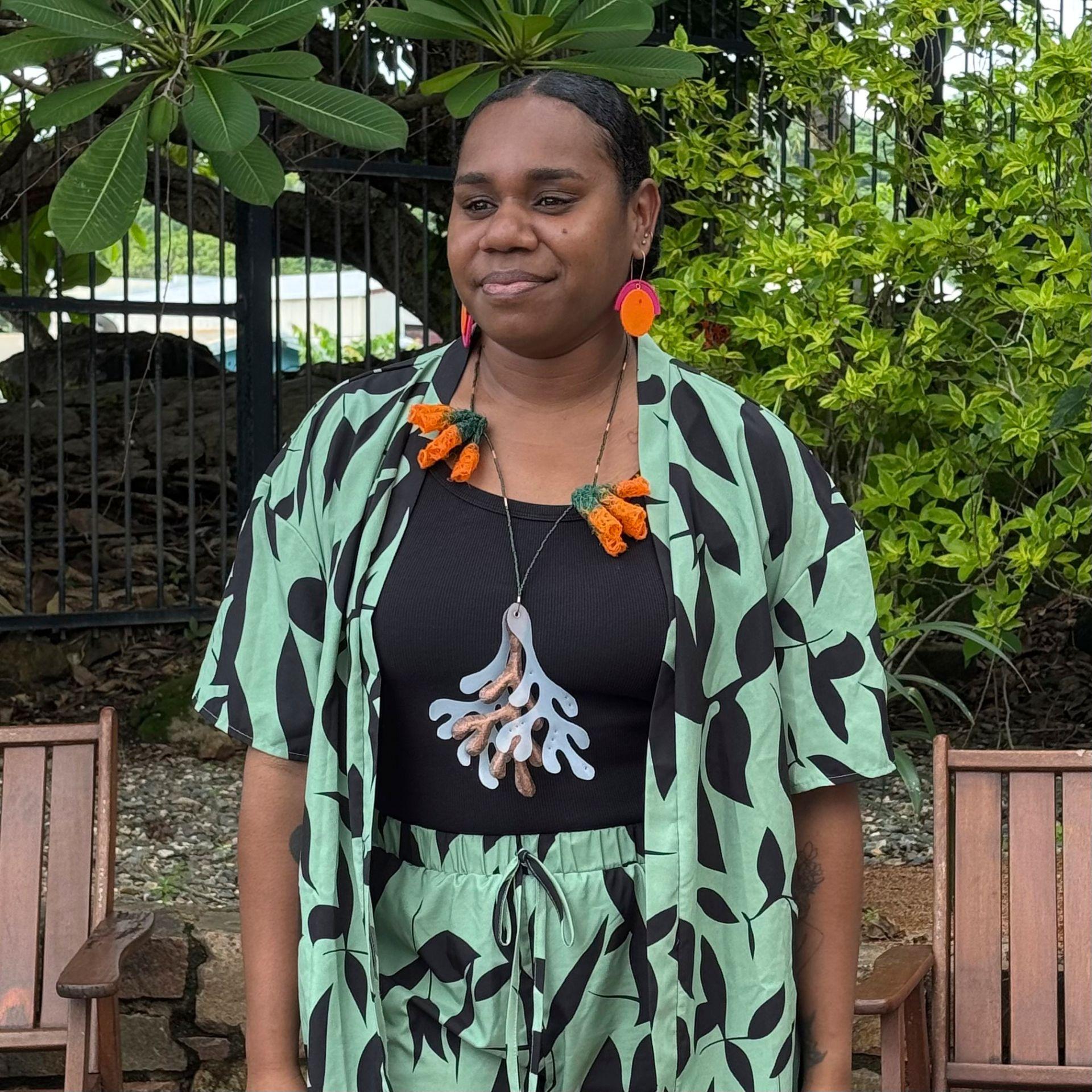To celebrate the opening of the Rigg Design Prize 2025 join us for a full day of floor talks featuring a number of the finalists from across Australia, hosted by NGV curators of Contemporary Design and Architecture.
Now in its tenth edition, the Rigg Design Prize is Australia’s highest accolade for contemporary design, awarded triennially to an Australian designer demonstrating outstanding creative achievement. In 2025, the prize turns its focus to the next generation, presenting Next in Design.
This year’s exhibition highlights early-career practitioners working across material disciplines including glass, furniture, woodwork, metalwork, textiles, lighting and contemporary jewellery, whose bold ideas and fresh perspectives are shaping the landscape of Australian design practice.
Join us for this rare opportunity to hear directly from twelve of the designers as they share the ideas behind their work in the Rigg, and reflect on what it means to be an emerging practitioner today.
11am – Andrew Carvolth
11.15am – Walter Brooks
11.30am – Samantha Dennis
11.45am – Kohl Tyler
12pm – Jay Jermyn
12.15pm – Nicole Lawrence
12.30 – 1.30pm – Lunch
1.30pm – Douglas Powell (Duzi Objects Studio)
1.45pm – Lavinia Ketchell
2pm – Amy Seo & Shahar Cohen (Second Edition)
2.15pm – Nicola Charlesworth & Kim Stanek (Object Density)
2.30pm – Olive Gill-Hille
2.45pm – Claudia Lau
Andrew Carvolth explores furniture as a medium for reflecting on the shared habits, domestic rituals and material histories shaped by life in Australia. Based in Adelaide, his work channels the visual language of the Australian vernacular filtered through the lens of craft and contemporary design.
Walter Brooks belongs to a new generation sustaining Tiwi cultural practice through designing and making. Based in Milikapiti on Melville Island, Brooks is an artist at Jilamara Arts & Crafts Association, where he creates tokwampini (birds), tutuni (poles) and ceremonial spears using locally sourced ironwood and ochres.
Samantha Dennis uses jewellery to challenge the boundaries of body adornment, perception and human empathy. From her studio on the banks of Kanamaluka (Tamar River) in Launceston, she designs and makes intricate works that invite close inspection and are at times unsettling.
Kohl Tyler works primarily in ceramics and occasionally in watercolour and social practice. They explore ephemerality, interconnectedness and the natural archive – understood as nature’s own record of time and transformation – through a speculative design lens.
Jay Jermyn explores how the self is shaped, divided and mediated through experiences of nature, music, ritual and technology. His work is informed by his background as an electrician, industrial designer, artist and electronic dance musician.
Nicole Lawrence is a designer and fabricator whose practice revolves around the expressive potential of metal. With over a decade of technical experience, she brings together training in gold and silversmithing and industrial design from Melbourne Polytechnic and RMIT University, Melbourne, informing her nuanced approach to production.
Douglas Powell’s background in product design, bicycle frame–building and metal fabrication underpins their experimental approach to object and furniture design. Working under the studio name Duzi, the Welsh-born, Fremantle-based designer has developed a distinctive approach to the fabrication technique known as pressure forming.
Lavinia Ketchell is a is a Meriam Mir artist based on Darnley Island in the Torres Strait, where salt water, culture and community shape daily life. A leading member of Erub Arts, Ketchell repurposes rogue fishing nets retrieved from oceans and shorelines into sculptural forms and functional objects.
Amy Seo and Shahar Cohen founded Sydney design studio Second Edition in response to the volume of construction and demolition waste sent to landfill. The studio emerged from a Master of Architecture project at the University of Technology Sydney, where Seo and Cohen designed and built a kitchen entirely from salvaged materials.
Nicola Charlesworth and Kim Stanek founded Object Density, a Sydney-based studio producing furniture, lighting and objects that communicate values of sustainability, community and culture. With backgrounds in industrial and furniture design, the pair share a fascination with process, narrative and material transformation, particularly the potential of discarded or overlooked material resources.
Olive Gill-Hille is a multidisciplinary artist and designer based in south-west Western Australia. Trained in sculpture and furniture design at the Victorian College of the Arts and RMIT University, Melbourne, Gill-Hille, through her practice, pursues the expressive potential of functional objects.
Claudia Lau is a ceramicist whose practice centres on the aesthetic and technical potential of ceramic glaze. With knowledge of material chemistry and a highly experimental approach, she develops surface finishes that extend the possibilities of colour and texture on different clay bodies in the kiln.
The Rigg Design Prize is generously supported by the Cecily & Colin Rigg Bequest, managed by Equity Trustees.
